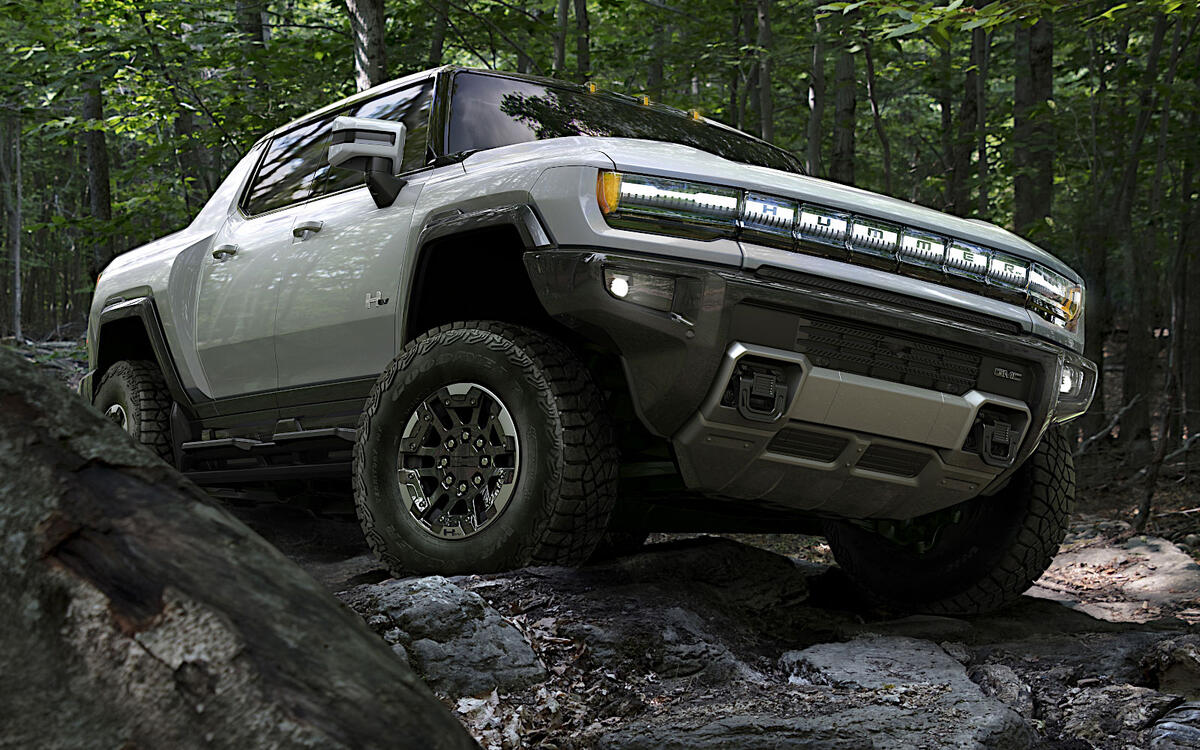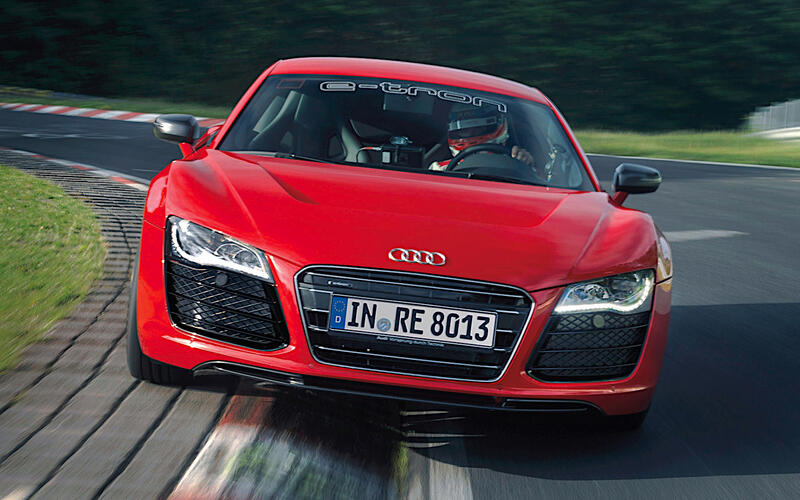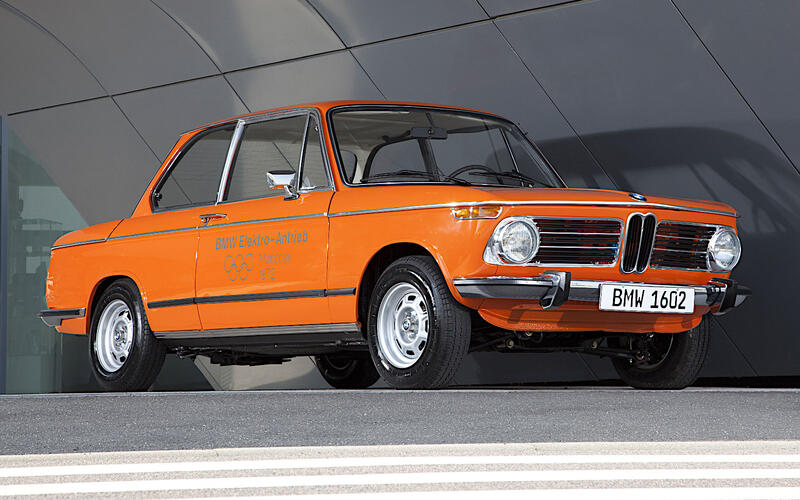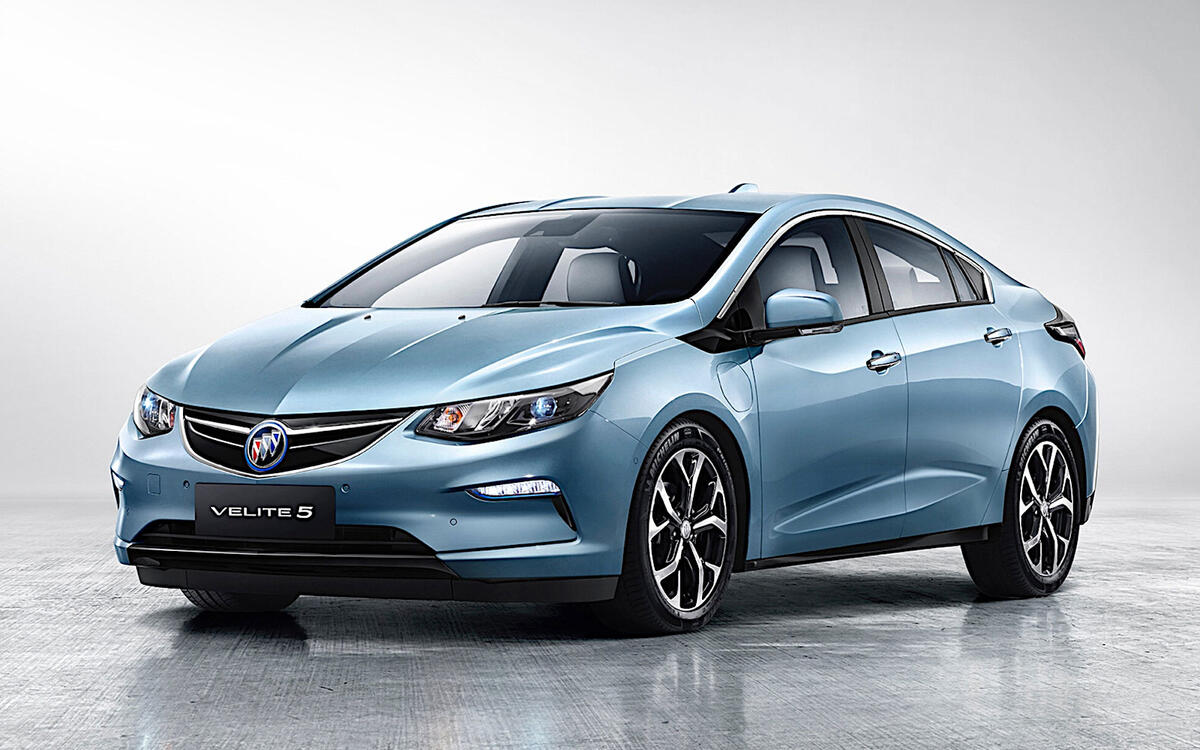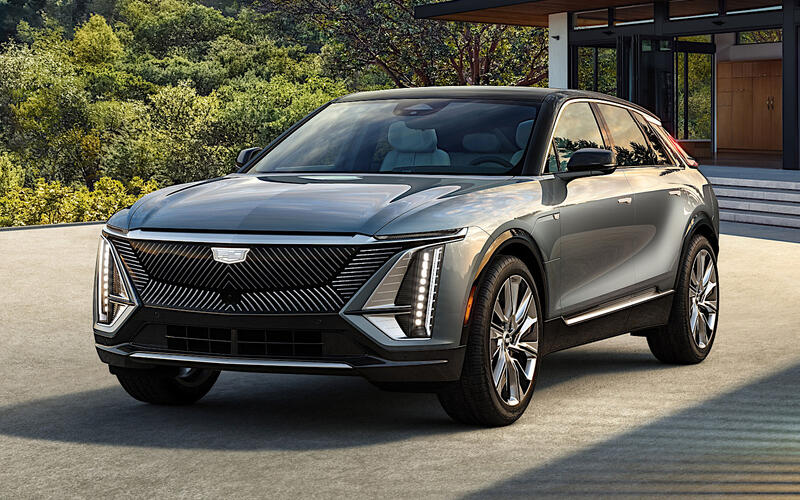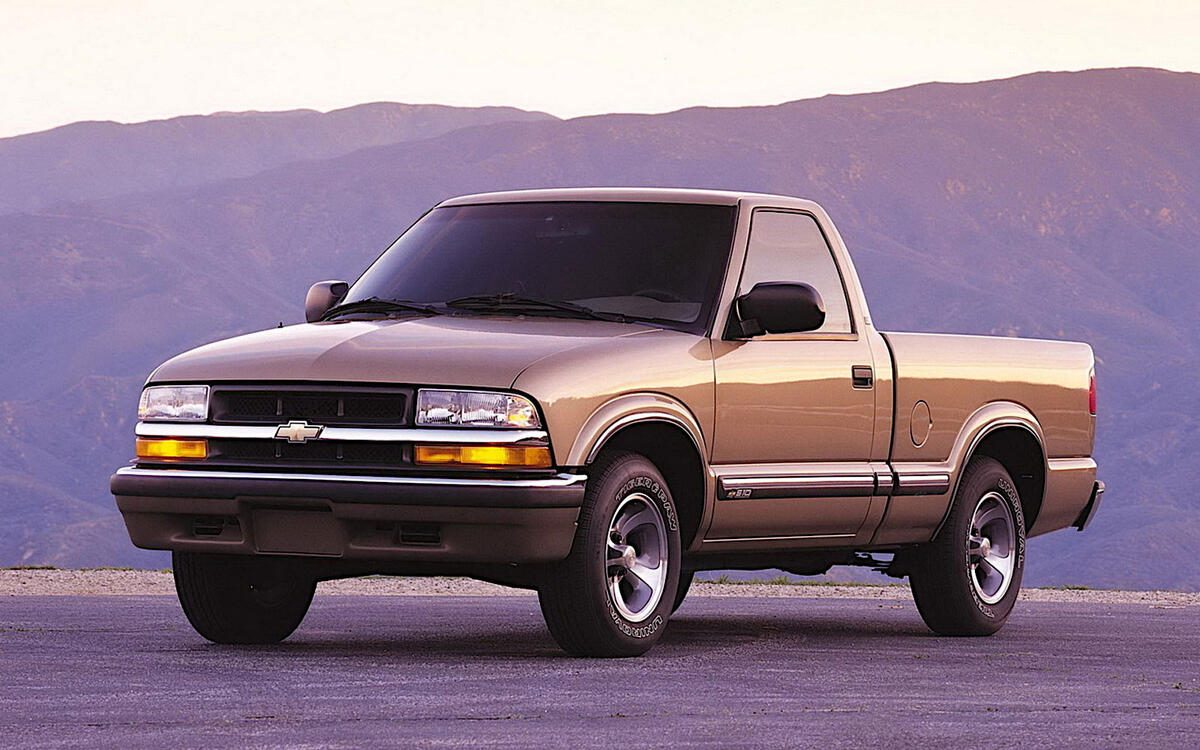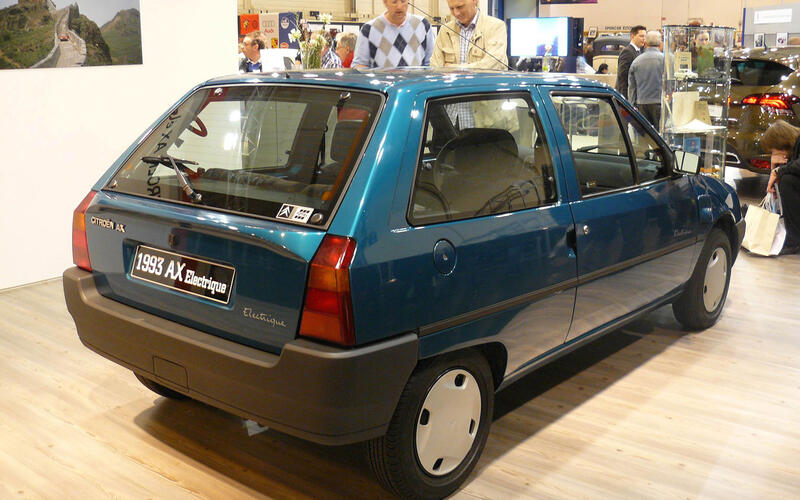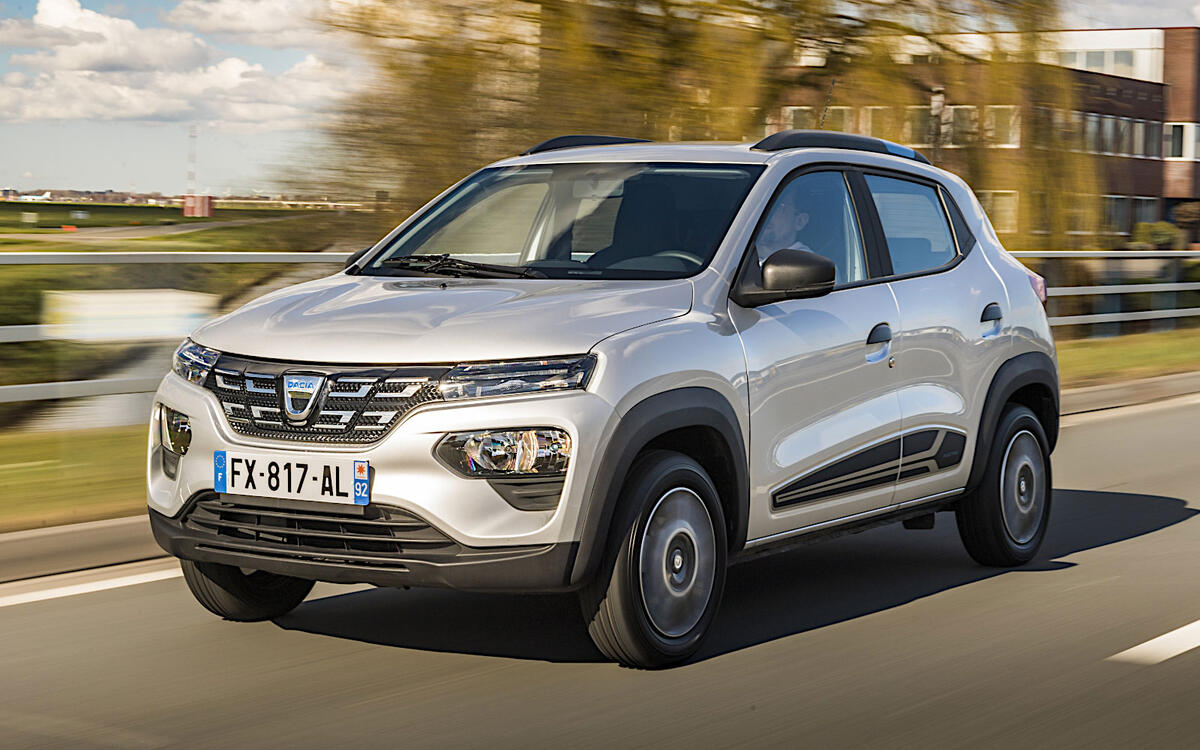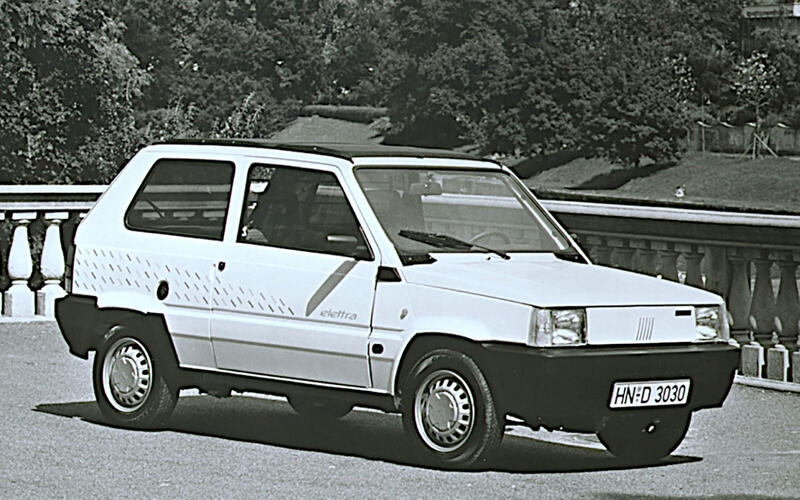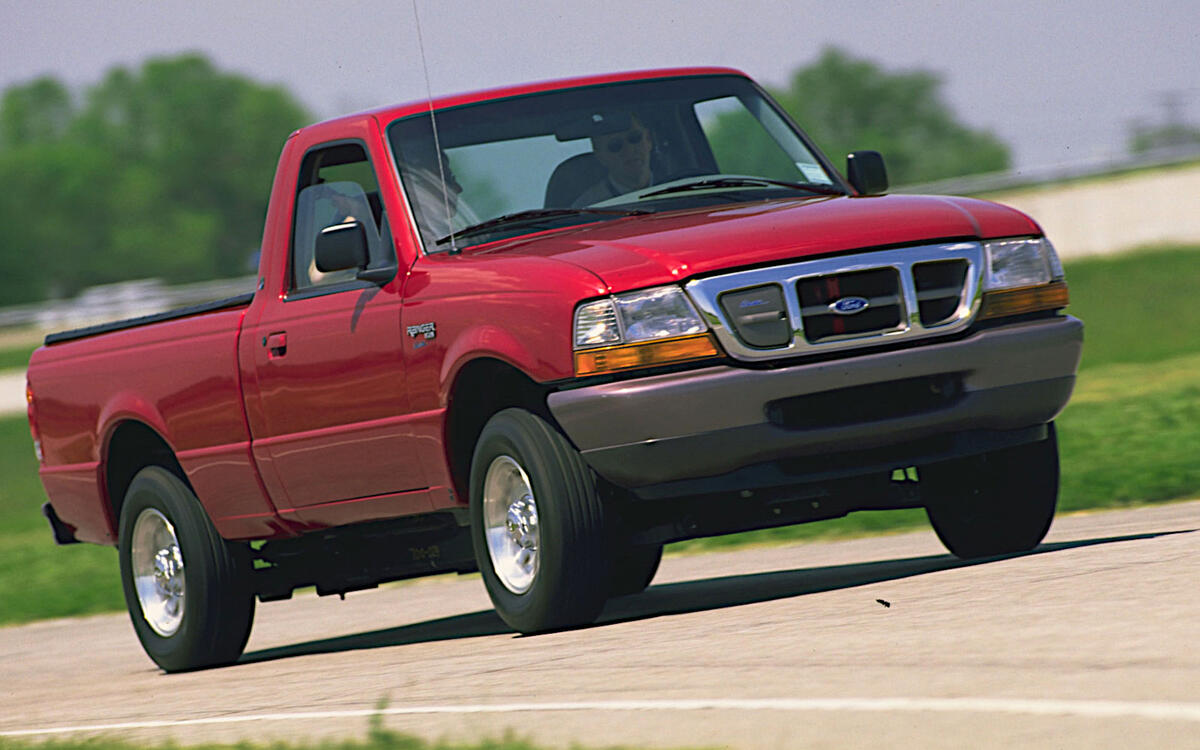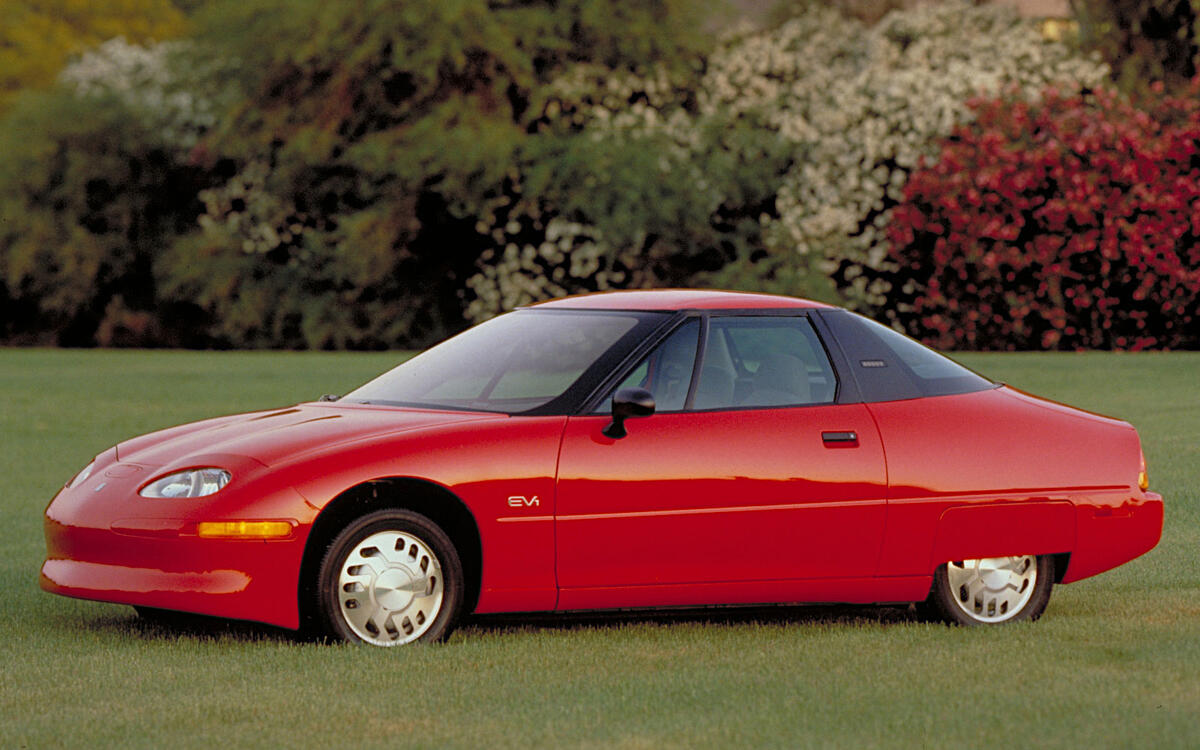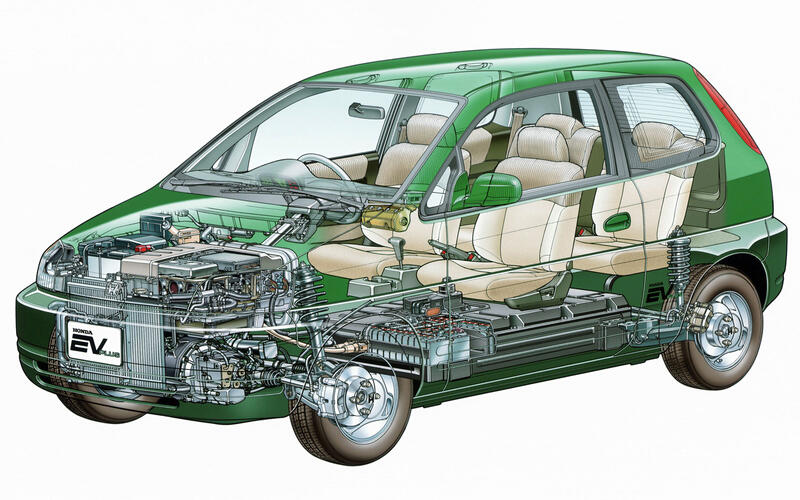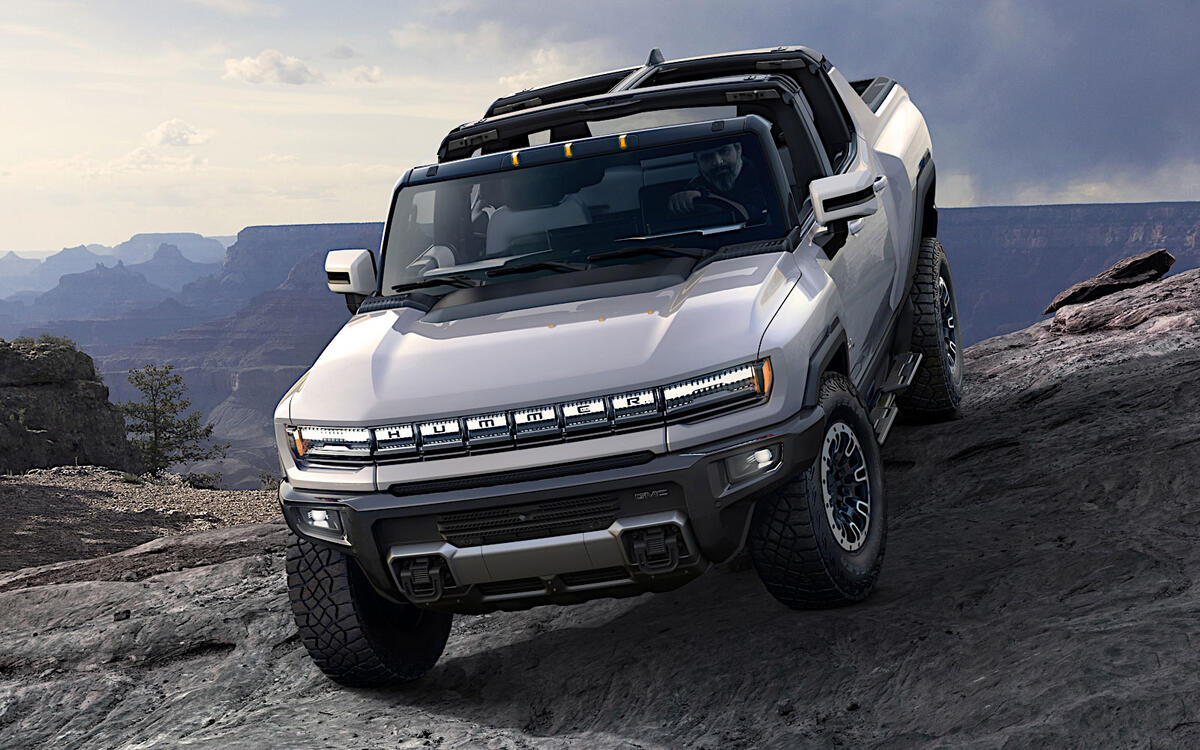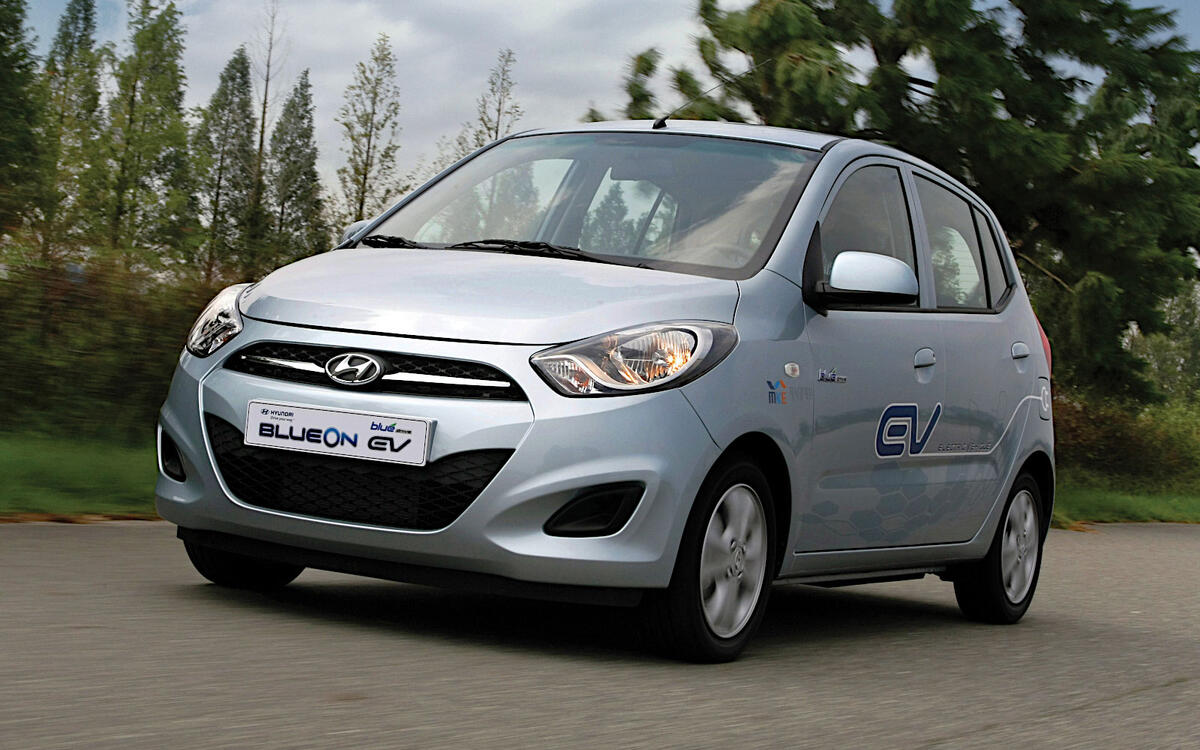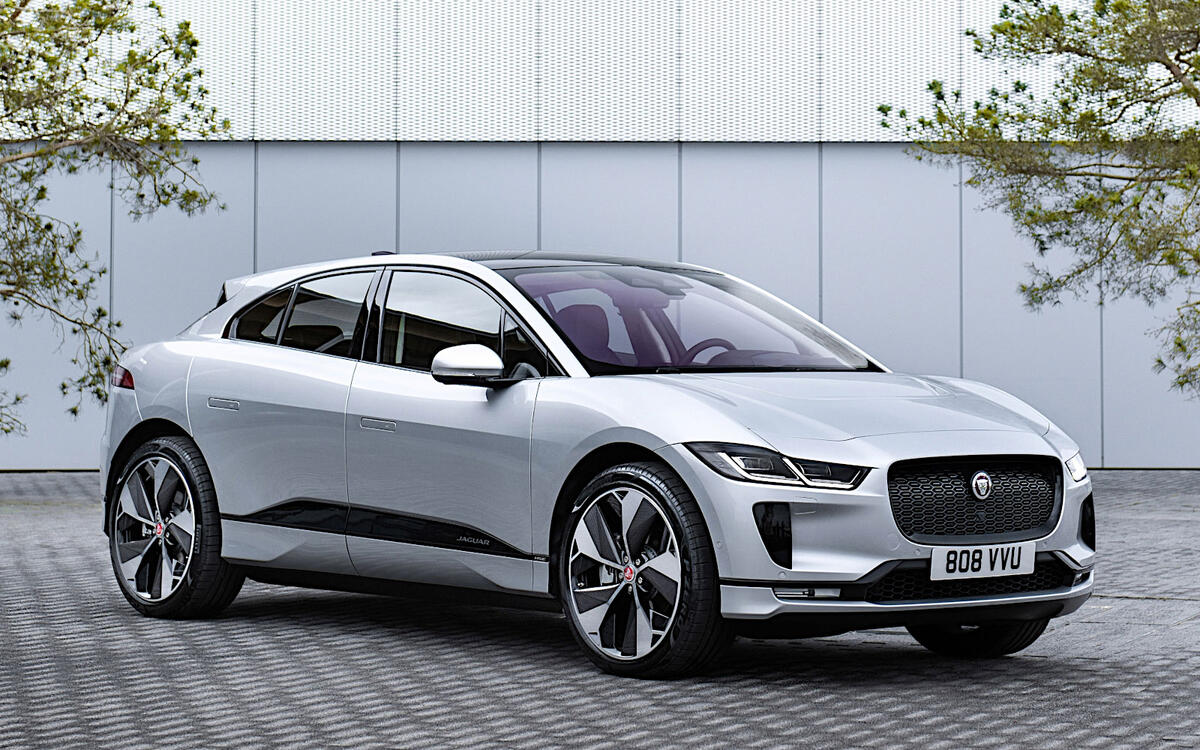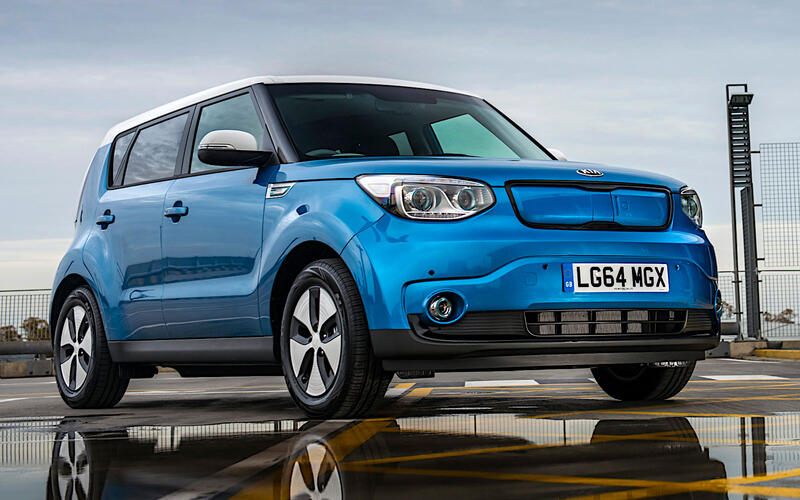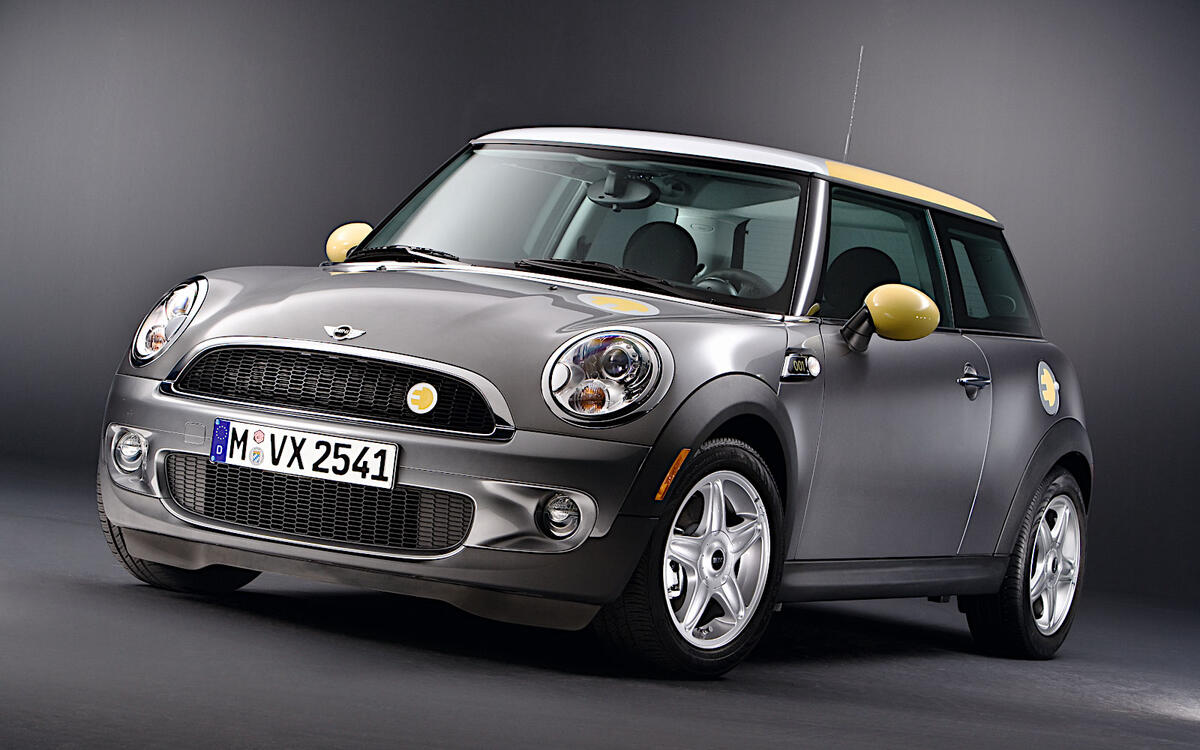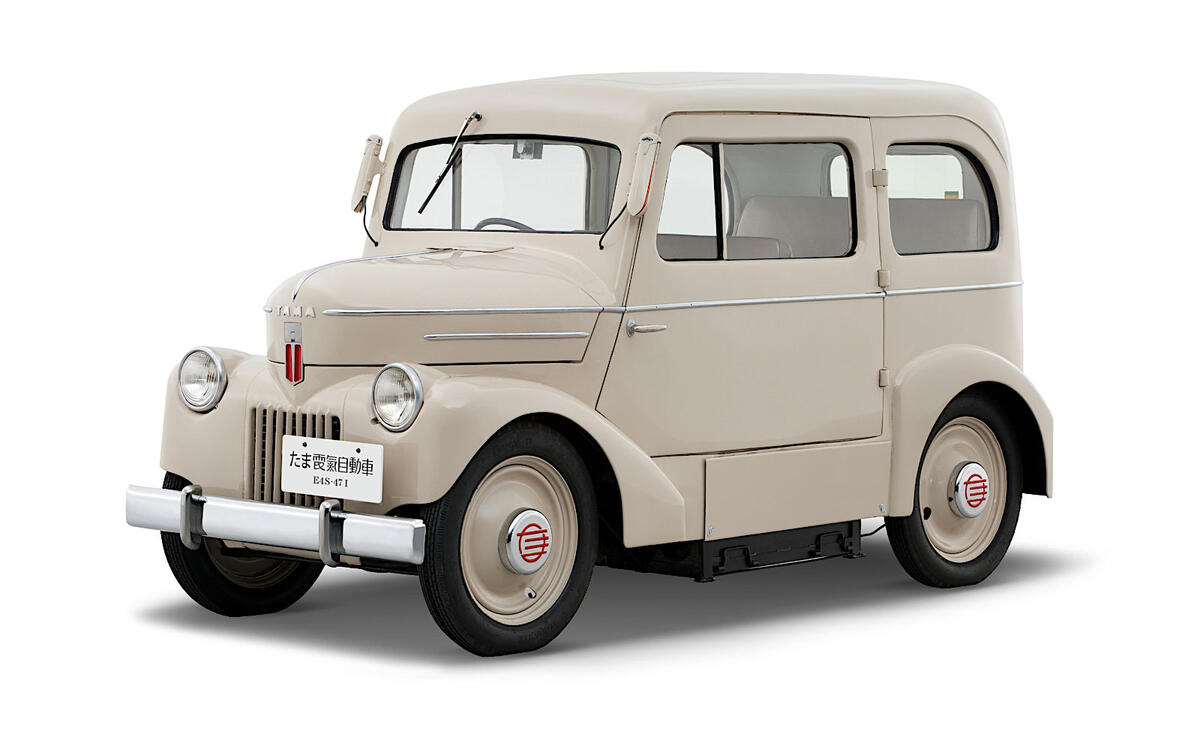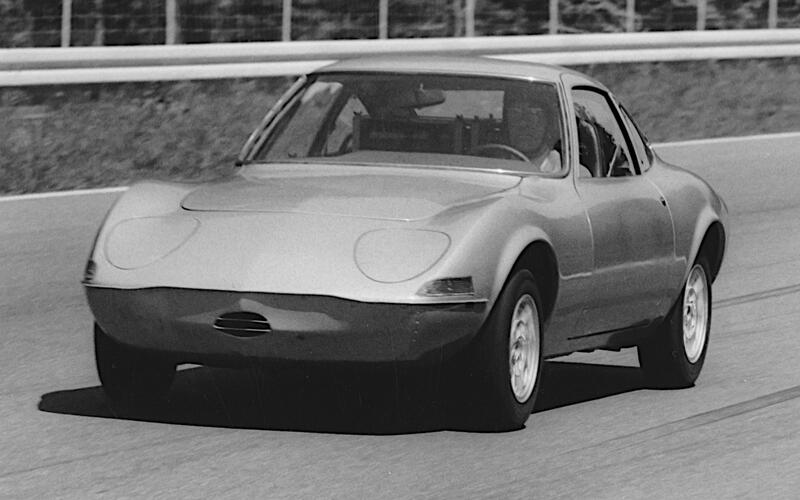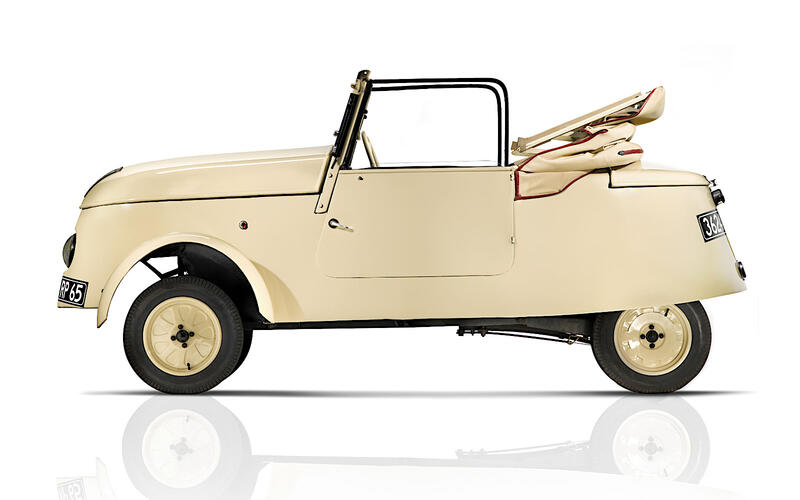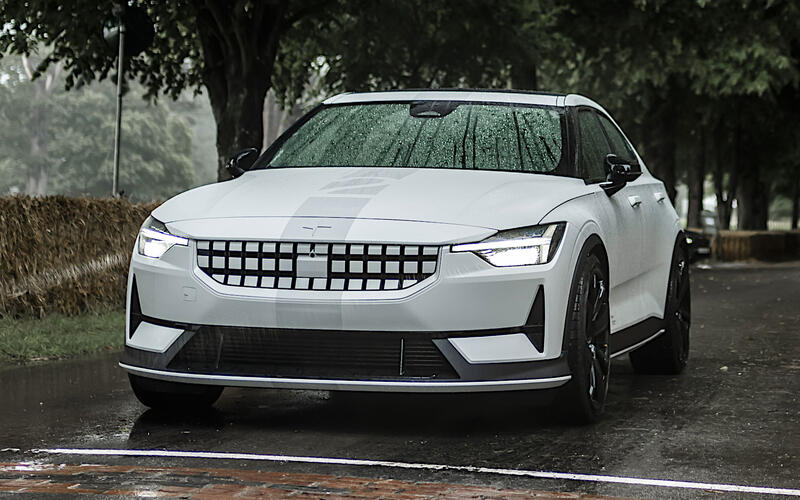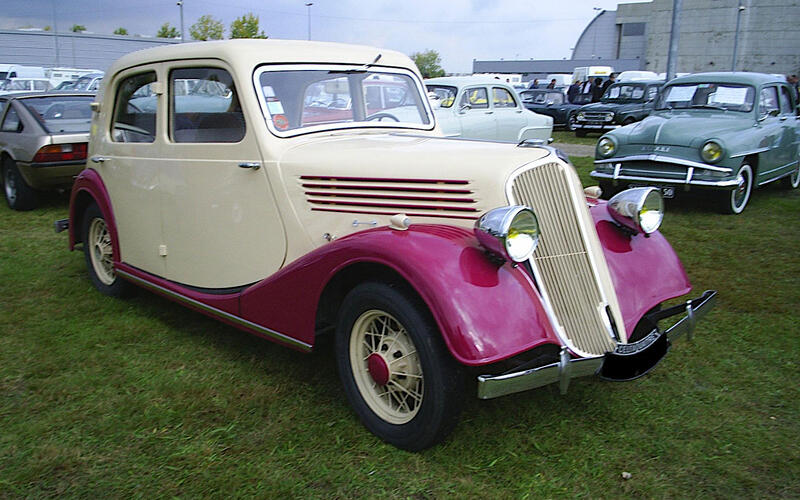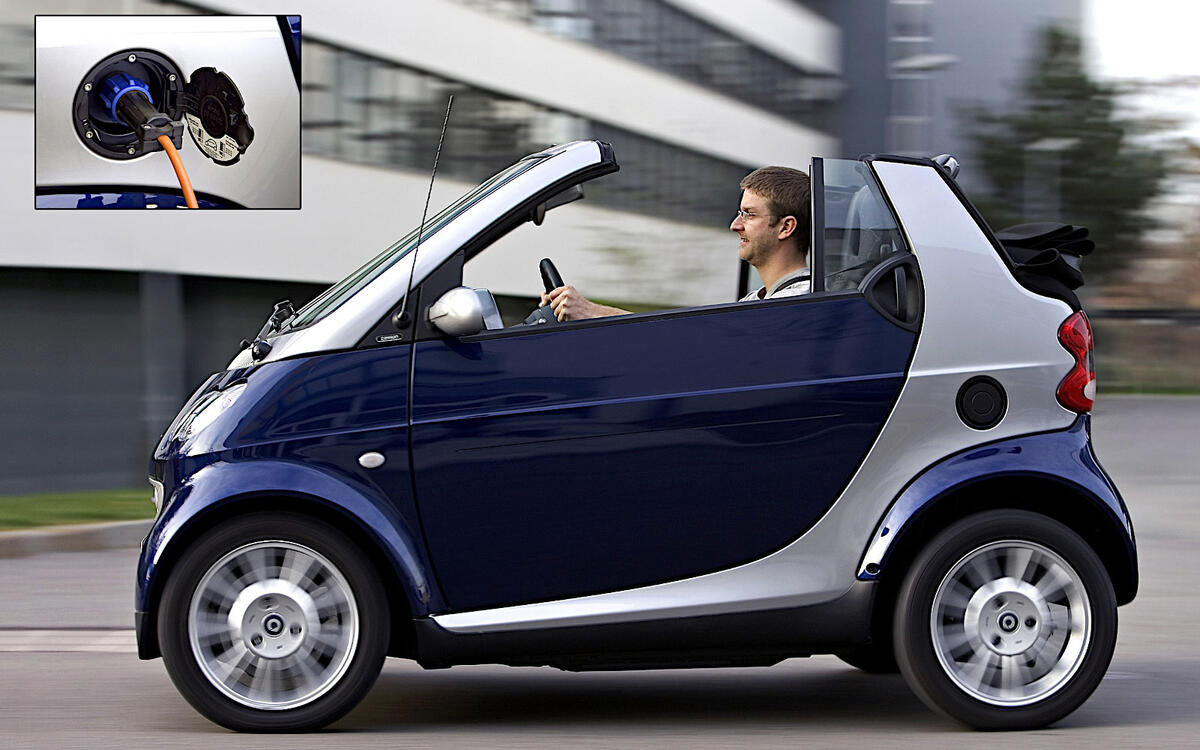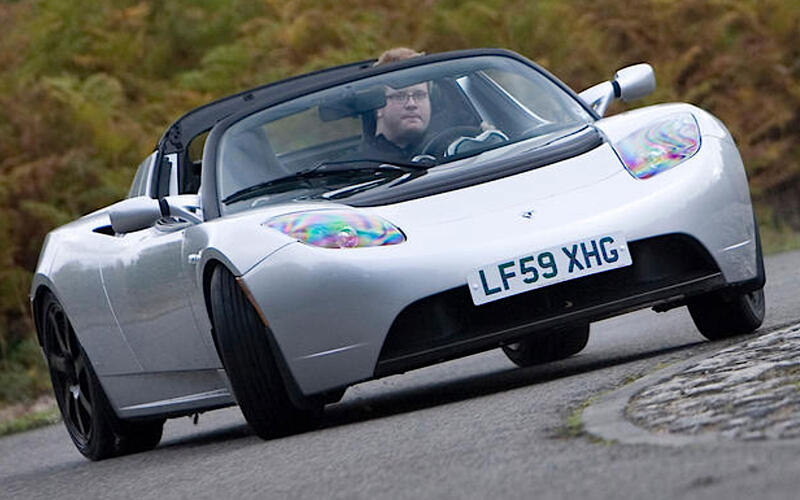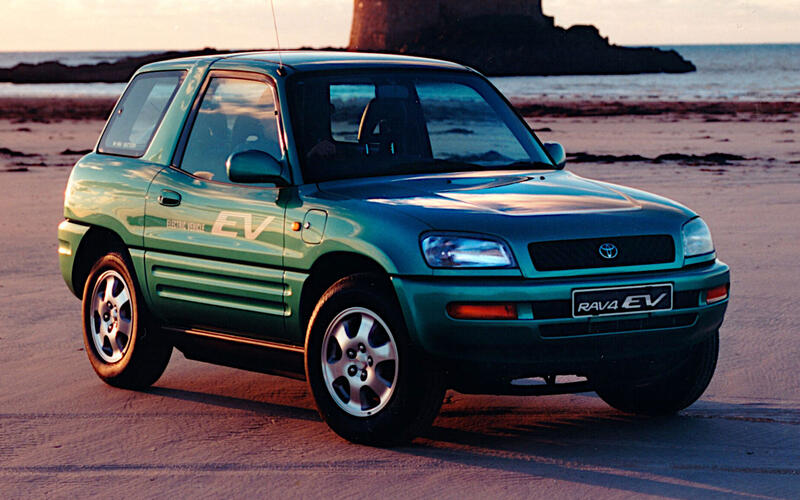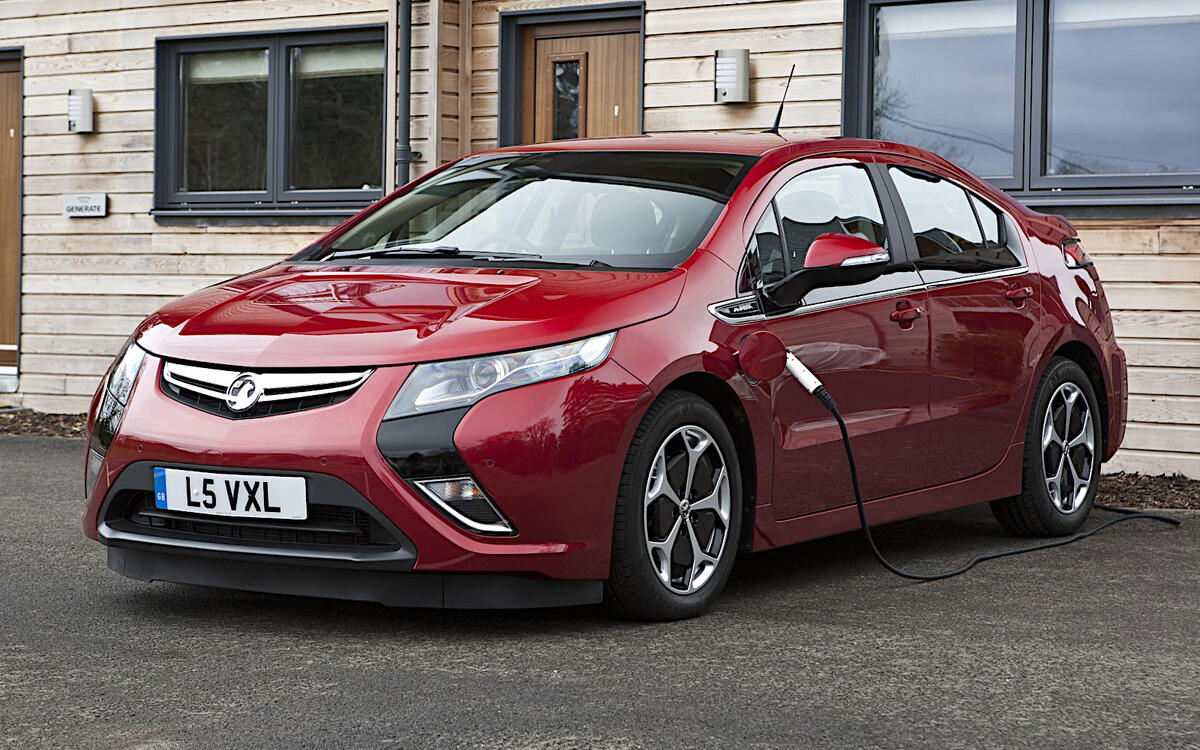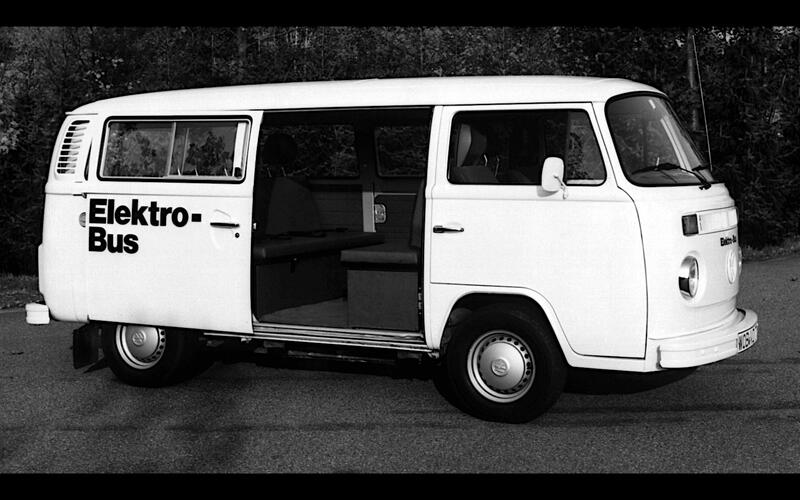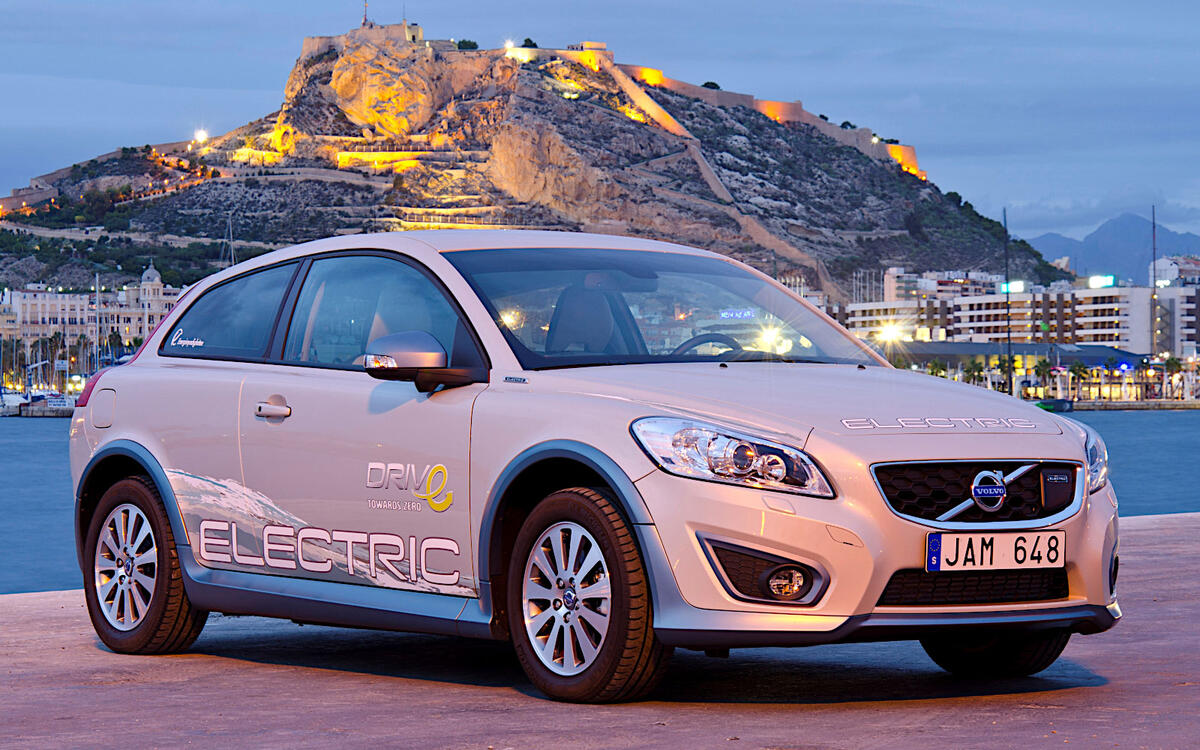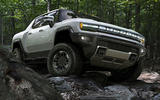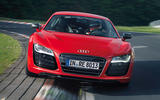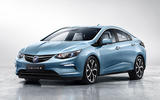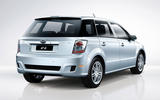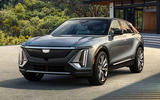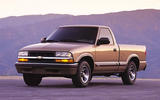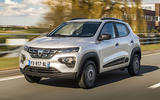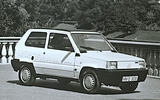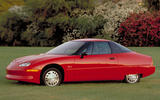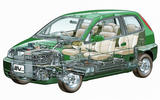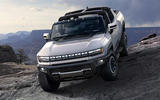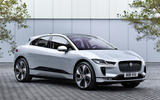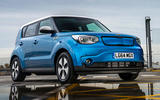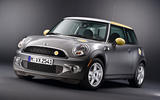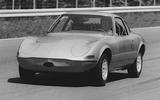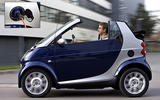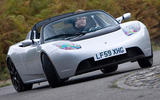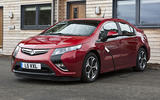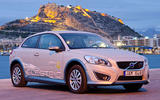 Slide of
Slide of
Almost every car manufacturer in the world has now committed itself to a future of building electric vehicles.
Clearly, this process had to start somewhere. In several cases, it began quite recently, in others over a century ago. Here we list, in alphabetical order, the first EVs (excluding hybrids) produced by manufacturers in business today. Our choice of whether to pick production vehicles, prototypes or one-off specials is based on how interesting we think they are.
 Slide of
Slide of
Audi R8 e-tron
Audi arrived in the EV sector relatively late. Although an e-tron concept based on the R8 sports car was displayed in 2009, a customer-ready version did not arrive for another six years. The R8 e-tron had two rear-mounted electric motors with a combined output of 456bhp. It was produced only briefly, and in very small numbers; it had a single-charge range of around 270 miles.Audi's first vehicle designed from the start to be all-electric was the e-tron crossover, which was launched in 2018. PICTURE:: R8 e-tron prototype
 Slide of
Slide of
BMW 1602 Elektro-Antrieb
BMW converted two examples of the 1602 sedan into Elektro-Antrieb (electric-drive) prototypes. These made their public debut at the 1972 Olympic Games in Munich, where they were used as support vehicles.
The BMW i3, available either as a full EV or with a 647cc two-cylinder range-extender gasoline engine, went into production 41 years later, in 2013.
 Slide of
Slide of
Buick Velite 5
Buick uses the Velite name for electric and plug-in hybrid vehicles sold only in China. The first was the Velite 5, which was essentially a second-generation Chevrolet Volt with Buick badging.
Introduced in 2017, the Velite 5 was followed by the Velite 6 crossover and the Velite 7 hatchback, which is a restyled local version of the Chevrolet Bolt EUV.
 Slide of
Slide of
BYD e6
Chinese manufacturer BYD Auto was formed as recently as 2003, and has produced a great many models since then.
Latterly, these have been predominantly electric. The brand's first EV was the e6 crossover, which first appeared as a taxi on the streets of Shenzhen in May 2010 and went on sale to private customers in October 2011.
 Slide of
Slide of
Cadillac Lyriq
Although Cadillac has no EVs in production at present, they are likely to represent half of the GM luxury brand's line-up within five years.
The first will be the Lyriq, which is due to go on sale in 2022. It will be the first GM vehicle based on the EV-specific BEV3 platform, which will also be used for future Cadillacs, Buicks and Chevrolets.
 Slide of
Slide of
Chevrolet S-10 EV
The S-10 EV was a derivative of the second-generation Chevrolet S-10 pickup truck.
Slightly predating a similar version of the Ford Ranger, the S-10 EV had an electric motor driving the front wheels. It was introduced for the 1997 model year, slightly updated for 1998 and then discontinued after very few examples had been sold.
 Slide of
Slide of
Citroen AX Electrique
After experimenting with EV versions of the Visa-based C15 and larger C25 panel vans, Citroen went into production with the AX Electrique in December 1993.
Production ended in 1996 after just 374 examples had been built. The car was replaced almost immediately by the Saxo Electrique. Citroen also introduced the Berlingo Electrique van in 1997.
 Slide of
Slide of
Dacia Spring
The Spring is Renault subsidiary Dacia's first EV, introduced in 2021. It's a small hatchback based on the same platform used for the gasolinel-engined Renault Kwid budget car and the all-electric Renault City K-ZE.
Although most Dacias are manufactured in Romania, the Spring is built - like the City K-ZE - in China. It is not currently on sale in the UK.
 Slide of
Slide of
Fiat Panda Elettra
Fiat collaborated with Austrian company Steyr-Puch to produce an electric version of the first-generation Panda, based on the CL trim level. Its top speed was only 43mph, but since the car was designed primarily for urban use this wasn't too much of a problem.
The Panda Elettra was built from 1990 to 1998. In an astonishing display of commitment to electric vehicles for the time, Fiat also sold a Cinquecento Elettra from 1992 to 1996.
 Slide of
Slide of
Ford Ranger EV
The Ranger EV was a pickup truck similar in concept to the Chevrolet S-10 EV mentioned earlier. The main difference, apart from who built it, was that the Ford's electric motor and driven wheels were at the back rather than the front.
Ford put the Ranger EV into production a year after the Chevy, in 1998, and continued to manufacture it for slightly longer, until 2001. Around 1500 examples are believed to have been made.
 Slide of
Slide of
General Motors EV1
The EV1 was the first GM vehicle designed from the outset to be powered only by electricity. One of the oddest-looking production cars of its day, it was manufactured in two generations from 1996 to 1999 and offered to customers only on a lease basis.
Nearly (but not quite) all examples were recalled and scrapped. GM was later accused of trying to suppress development of electric vehicles. The company denied this suggestion, which sharply contrasts with its current policy. Then-GM CEO Rick Wagoner later said killing the EV1 was his biggest regret from his time running the company.
 Slide of
Slide of
Honda EV Plus
Honda began serious research into producing an electric vehicle in April 1988. Exactly nine years later, it launched the EV Plus. The small hatchback's body was all-new, rather than being based on that of an existing model. Performance was relatively spritely, with a top speed of around 80mph.
Production, which amounted to around 300 examples, ended in 1999, the same year that Honda introduced its first-generation gasoline-electric hybrid Insight.
 Slide of
Slide of
Hummer EV Pickup
In the days when Hummer was building enormous trucks with spectacularly uneconomical engines, it would have been difficult to predict that the badge would ever appear on an electric vehicle.
However, Hummer has recently been re-established as a sub-brand within GMC, and there are no plans for it ever again to build anything with an internal combustion engine.Its first vehicle will be the Hummer EV Pickup, which will have a maximum power output of 1000bhp in its most expensive form. A mechanically similar SUV will join the range in 2024.
 Slide of
Slide of
Hyundai BlueOn
The BlueOn, an electrified version of the Hyundai i10 city car, was unveiled at the Frankfurt Show in 2009. At the time, there was talk of around 2500 examples being built over the next three years. Actual production is believed to have been less than a tenth of that.
Hyundai's first electric model was supplied to several South Korean government agencies, but was never sold to the public.
 Slide of
Slide of
Jaguar I-Pace
The I-PACE high-performance electric crossover began picking up awards almost from the moment it went on sale in 2018. Two of the most prestigious were the 2019 World and European Car of the Year awards, the latter being won on a tie-break from the Alpine A110.
The I-PACE is Jaguar's first, and so far only, electric vehicle. However, in 2021, Jaguar announced a commitment to producing nothing but EVs from 2025.
 Slide of
Slide of
Kia Soul EV
Kia put an electrified version of the Soul compact crossover on sale in 2014. The second-generation version made its public debut at the 2018 Los Angeles Show.
The Korean company has also converted the larger Niro into an EV. Its first model designed from the start to be purely electric is the EV6, which arrived in 2021.
 Slide of
Slide of
Mercedes Electrique
Mercedes introduced the battery-powered Electrique and the hybrid Mixte way back in 1906. The Electrique was offered in several forms, including as a passenger car for Emperor Franz Josef I of Austria (1830-1916) and as a truck for the Berlin fire brigade (pictured).
Due to concerns about range and performance, it was discontinued in 1908. Mercedes did not take electric vehicles seriously again until the 1970s.
 Slide of
Slide of
MINI E
The MINI E was an electric version of the MINI hatchback produced briefly from 2009. A very large field testing campaign was conducted first in the US, the UK and Germany, and later in France, Japan and China.
Despite this, the first electric MINI made available to the wider public - known variously as the MINI Electric and MINI Cooper SE - did not go on sale until 2020.
 Slide of
Slide of
Nissan Tama
Nissan dates its electric vehicle history by a circuitous route back to 1947. In that year, the Tama was launched by the Tokyo Electro Automobile Company, an offshoot of Tachikawa Aircraft. Considerably smaller than today's Nissan Micra, the Tama had a top speed of 22mph and a range of 40 miles.
Tokyo Electro later became Prince, and was absorbed into Nissan in 1966. Nissan's heritage fleet includes a Tama which was restored in 2010, the year in which the first-generation Nissan Leaf made its debut.
 Slide of
Slide of
Opel Elektro GT
The first electric Opel was a one-off version of the Opel GT sports car. The Elektro GT was powered by two Bosch electric motors with a peak output of 160bhp. Other modifications included aerodynamic improvements, low-resistance tyres and stronger springs. The springs were necessary because with all the batteries on board the car measured a hefty 1700kg - nearly as much as two standard GTs.
Despite that, the Elektro GT set six world speed records for electric cars over two days at Hockenheim in May 1971.
 Slide of
Slide of
Peugeot VLV
The VLV (for Véhicule Léger de Ville, or Light Town Car) was an electric two-seater cabriolet introduced during the Second World War in response to fuel rationing. Production began in Paris in June 1941 and continued until February 1943. Only 373 examples were built.
Peugeot turned its attention to electric vehicles once more in the 1970s, but did not put one on sale until the 106 Electrique was launched in 1995.
 Slide of
Slide of
Polestar 2
Polestar has a lively history which includes being a race team (now known as Cyan Racing) and developing high-performance versions of Volvo production cars. It was established as a Volvo-owned brand in its own right in 2017. Its first car, a gasoline-electric hybrid, was launched in that year.
Its second, accurately if unimaginatively named Polestar 2, is an all-electric vehicle launched in 2020 and built in China. The forthcoming Polestar 3 electric SUV will be built in South Carolina, USA.
 Slide of
Slide of
Porsche P1
Porsche's first EV predates its first production car by half a century. Ferdinand Porsche (1875-1951) created what was officially named the Egger-Lohner electric vehicle, C.2 Phaeton model in 1898, 50 years before the launch of the Porsche 356. He engraved the code P1 on all the major components, and that is how the car is now known. Untouched for many decades, it was recovered and placed in the Porsche Museum in 2014.
The P1 was followed by the Lohner-Porsche Mixte. This was a hybrid but not in the modern sense. Its gasoline engine in fact drove a generator, which provided electricity for the wheel-mounted motors.
 Slide of
Slide of
Renault Celtaquatre
Although Renault did not make electric vehicles available to the general public until 2011, its history as an EV manufacturer dates back to 1937. That was the year of the International Exposition of Art and Technology in Modern Life (more conveniently referred to as the World Fair) held between May and September in Renault's home city of Paris.
For this event, Renault built 35 taxis based on the chassis of its Celtaquatre small family car. The Celtaquatre's usual 1.4-liter gasoline engine was replaced by an electric motor.
 Slide of
Slide of
Skoda EV truck
In the late 1930s, Skoda built an electric truck which was used in the city of Pilsen to transport beer from the famous brewery to local restaurants. The truck had a payload of up to three tonnes, and a surprisingly aerodynamic front end.
The first battery-powered Skoda passenger car was the 1990s Eletra 151, a derivative of the Favorit.
 Slide of
Slide of
smart fortwo ed
Daimler subsidiary smart created its first electric vehicle in 2007. The briefest of glances would confirm that it was a derivative of the fortwo city car, but instead of the normal engine and gearbox it had an electric powertrain developed by UK company Zytek Automotive.
One hundred examples were made available for field testing in London, and were used by, among others, the Metropolitan Police.
 Slide of
Slide of
Tesla is one of the few manufacturers which has never built anything other than electric cars. Its debut model, the Tesla Roadster, was based on the Series 2 Lotus Elise, and was built from 2008 to 2012.
In February 2018, one example of the Roadster achieved the unusual distinction of being the first production car (as opposed to lunar rovers) to be launched into space.
 Slide of
Slide of
Toyota RAV4 EV
Toyota has shown little enthusiasm for battery-electric cars, preferring to concentrate instead on hybrids and hydrogen fuel-cell vehicles. It did, however, produce electrified versions of the first- and second-generation RAV4 SUV. 1484 examples of the first were sold or leased in the US from 1997 to 2002.
The second, developed in conjunction with Tesla, was produced over an even shorter period from 2012 to 2014, until the arrangement between the two companies ended.
 Slide of
Slide of
Vauxhall Ampera
The Ampera was a rebadged first-generation Chevrolet Volt, also sold in continental Europe as the Opel Ampera. Whatever its name, the car was driven by an electric motor, but also featured a 1.4-liter gasoline engine which functioned as a range extender.
The second-generation Volt, which was also marketed in China as the previously mentioned Buick Velite 5, had no Vauxhall or Opel equivalents.
 Slide of
Slide of
Volkswagen Elektro-Transporter
In 1972, Volkswagen revealed an EV version of its second-generation Transporter, known variously as the Elektro-Transporter or Elektro-Bus. Other than being spacious, it wasn't particularly practical. It took 30 seconds to reach its top speed of 43mph, and its range was only 25 miles.
Nevertheless, unlike the 1976 Elektro-Golf concept, it was a genuine production vehicle. VW built 120 examples over a period of years.
 Slide of
Slide of
Volvo C30 Electric
Although Volvo described the XC40 Recharge Pure Electric as its first all-electric car in a press release of 2020, it is actually the first to be put on general sale. It was preceded by the C30 Electric, a variant of the C30 hatchback produced in very small numbers and intended to be leased to fleet customers.
The C30 Electric was available briefly from 2011, but production of the entire C30 range ended shortly afterwards in 2013.
As the world goes electric, we take a look at the first EVs major firms have built. For many, they started long ago
Advertisement

